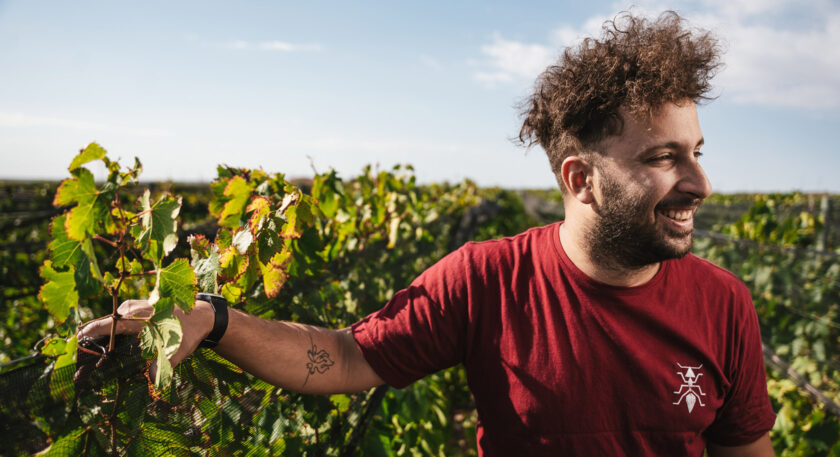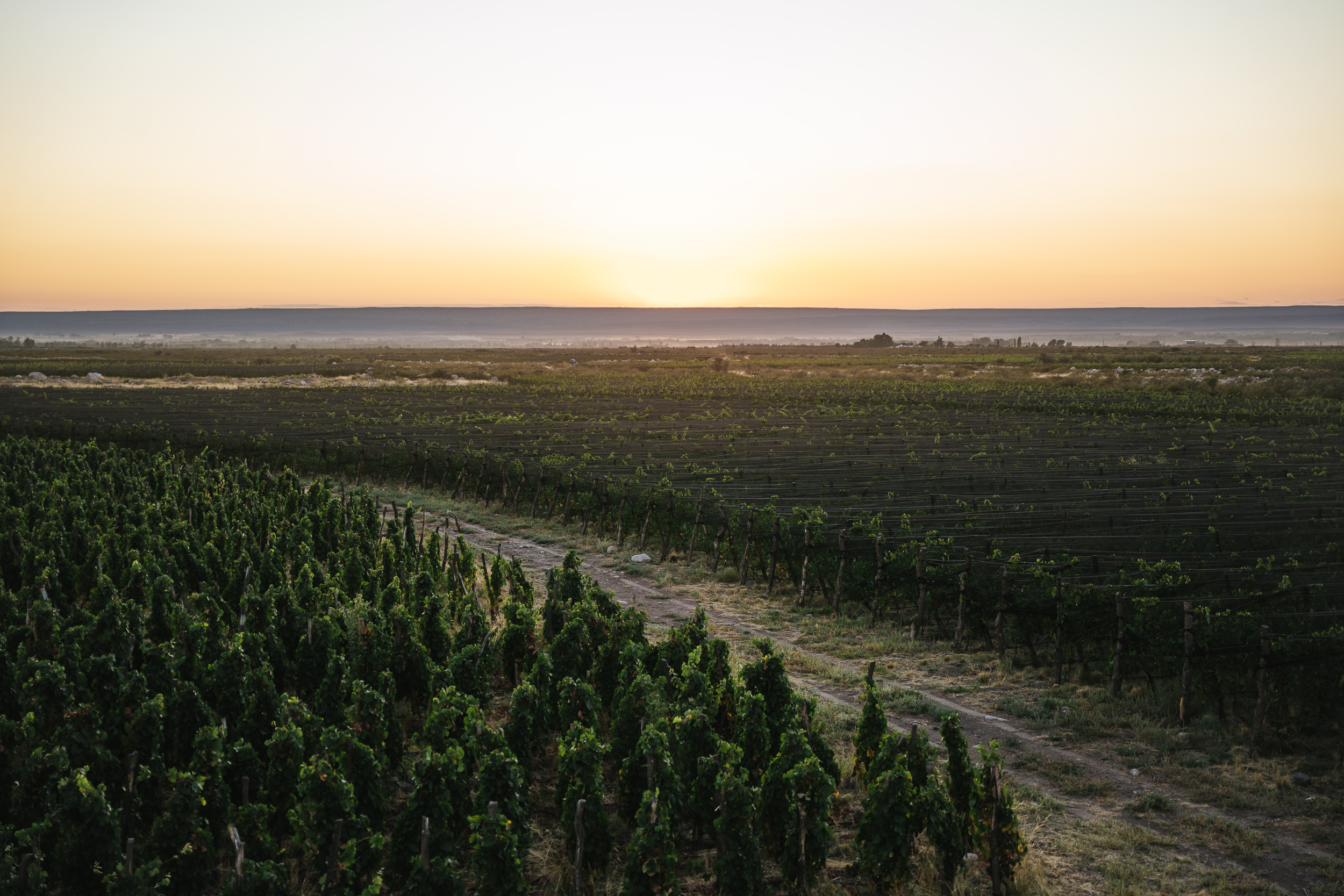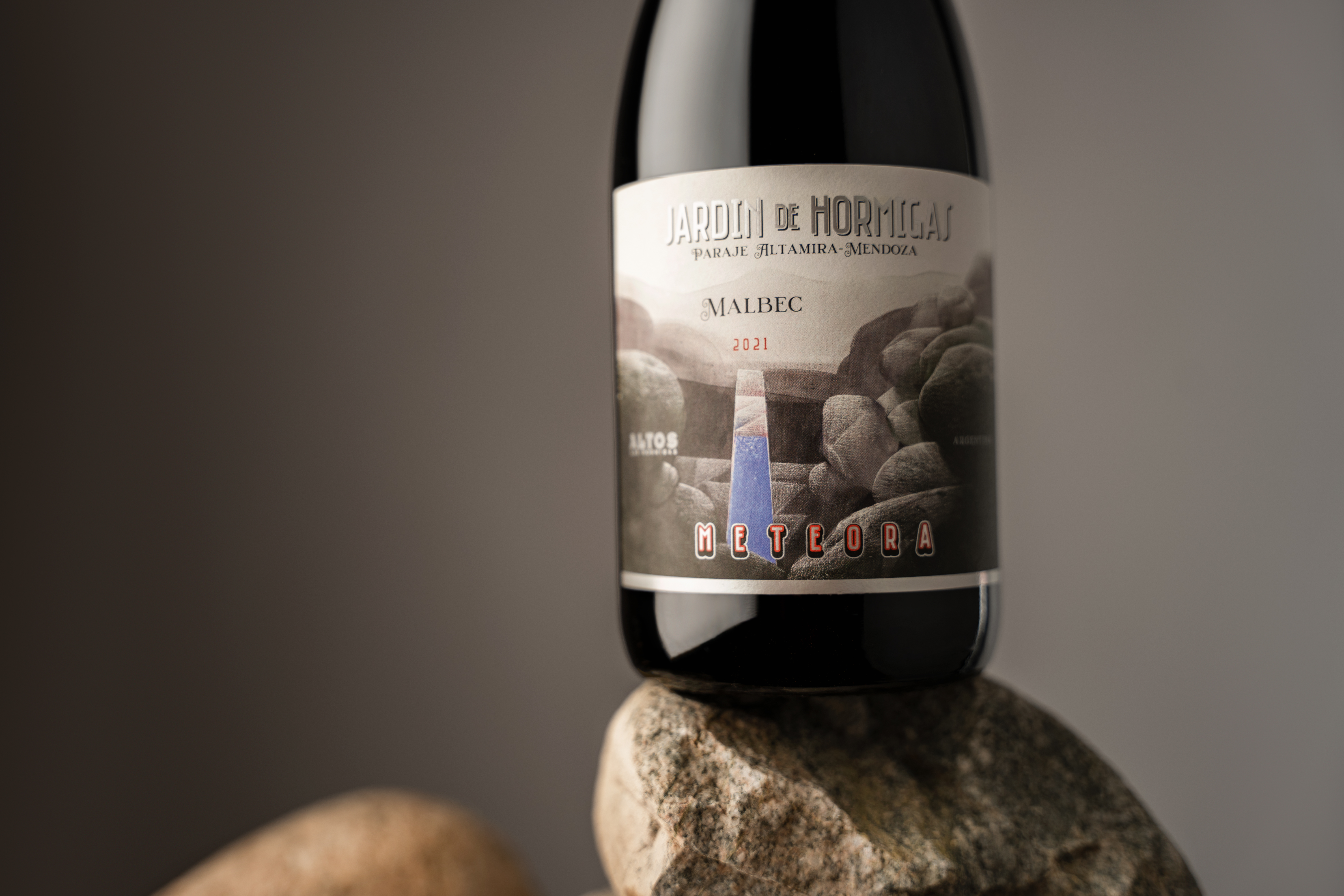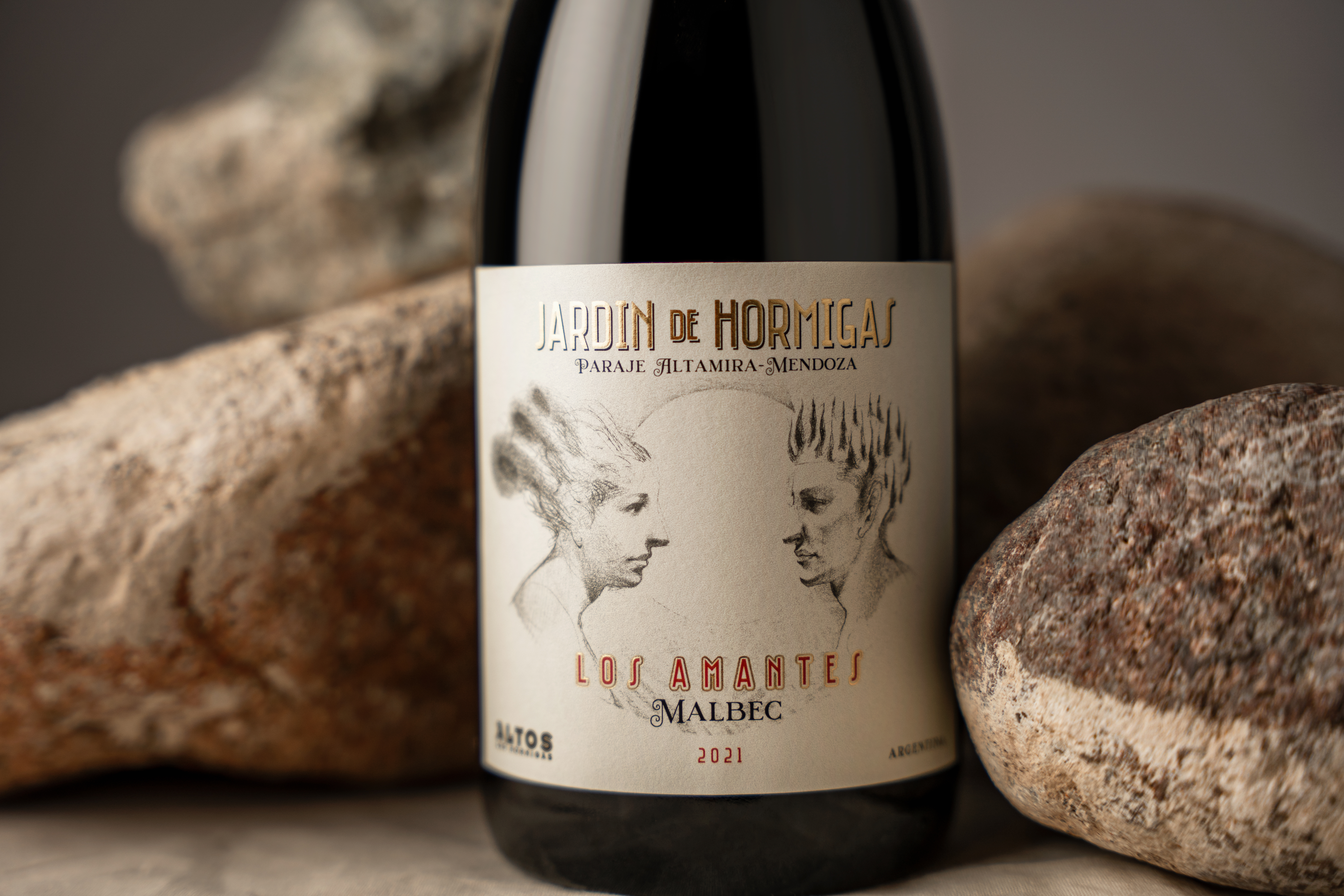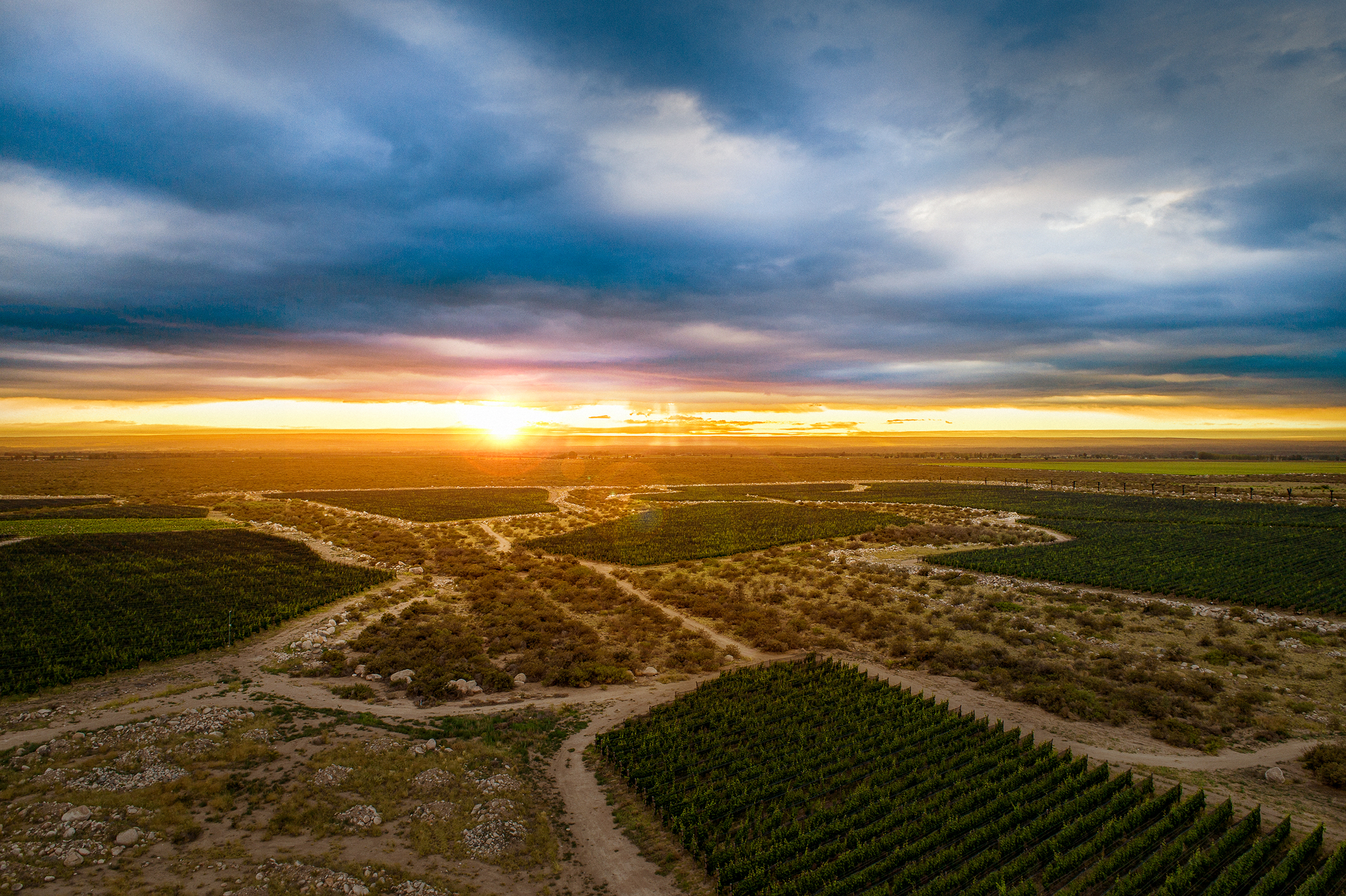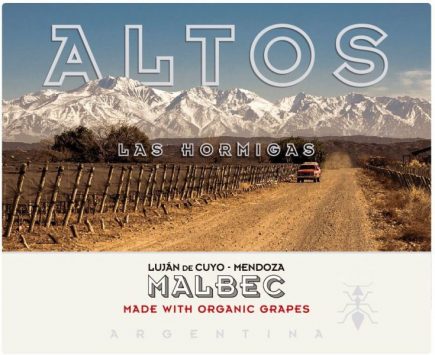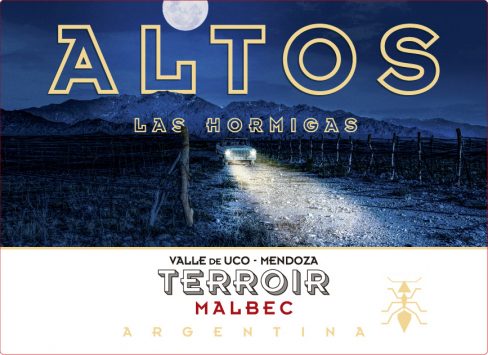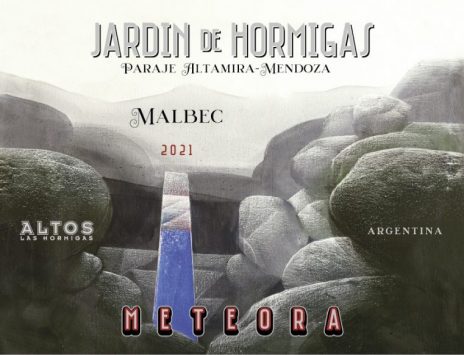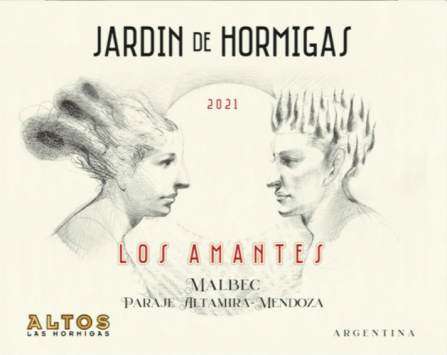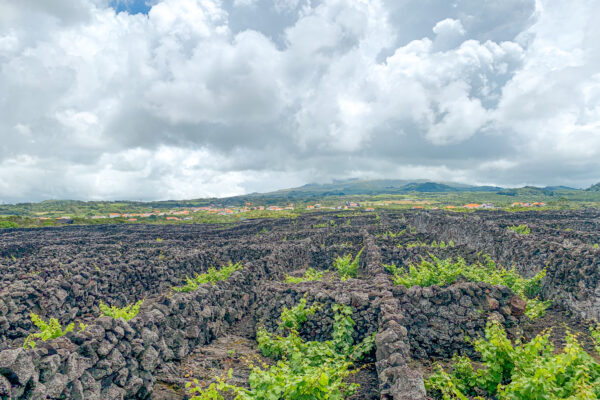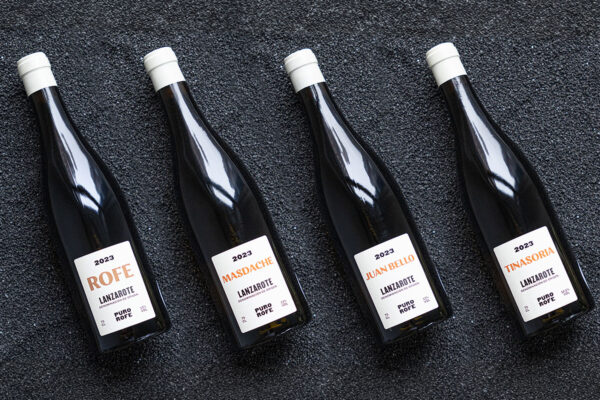Under the fresh vision of 35-year-old Federico Gambetta, Altos Las Hormigas is pioneering a new era of Malbec for a new generation of drinkers. We sat down with him to taste four wines and discover his modern understanding of terroir.
Thanks for coming to visit us, Fede. Let’s start with some background. How did you get started in wine?
Both of my grandparents have wineries in Mendoza and San Juan. Every Sunday, our families get together and talk about wine, wine, wine. My parents didn’t follow their parents’ path, but when I was 17, I said, “Let’s go. Let’s do it.” I studied agronomy. Now I am an agricultural engineer.
When I was 18, my first year of university, I worked in the vineyard, and I felt it. I was focusing on climate change with Malbec, and I went to work in the Rhone Valley, Napa Valley, and Tuscany during college. I returned to Mendoza in 2014 and became the winemaker at CARO Winery. In 2020, I started at Altos Las Hormigas. Alberto called me. They heard about the crazy curly-haired guy. It was wild to see them on Zoom—Pedro, Attilio, Alberto, Antonio—for me, they were my heroes. Fifteen days after the interview, I was working. And I was only 30!
What are some of the challenges with climate change in Mendoza?
One of the challenges is warmer days, but I think this is a worldwide problem. The thing that we are doing to avoid that is instead of VSP vineyards, we’re converting to pergola systems to keep the fruit far away from the soil, so it doesn’t get as hot. Another thing we’re doing—or rather not doing—is pruning the leaves so the clusters can stay protected in the shade.
The main issue in Mendoza today is water. Today, it’s manageable, but in 50 or 100 years, it will be a disaster. We have to prepare with more efficient solutions. Israel is very efficient. They operate at 70-75% efficiency, and we’re at 55-60%, so we have to increase that very quickly. We have to take action now.
We used to do flood irrigation. Now we do drip irrigation. Altos Las Hormigas’ vineyards are divided into 24 different plots, and each plot has its own soil type. Different soil types need different amounts of water, so we are gauging the precise amount of water for each plot as a way to preserve our resources.
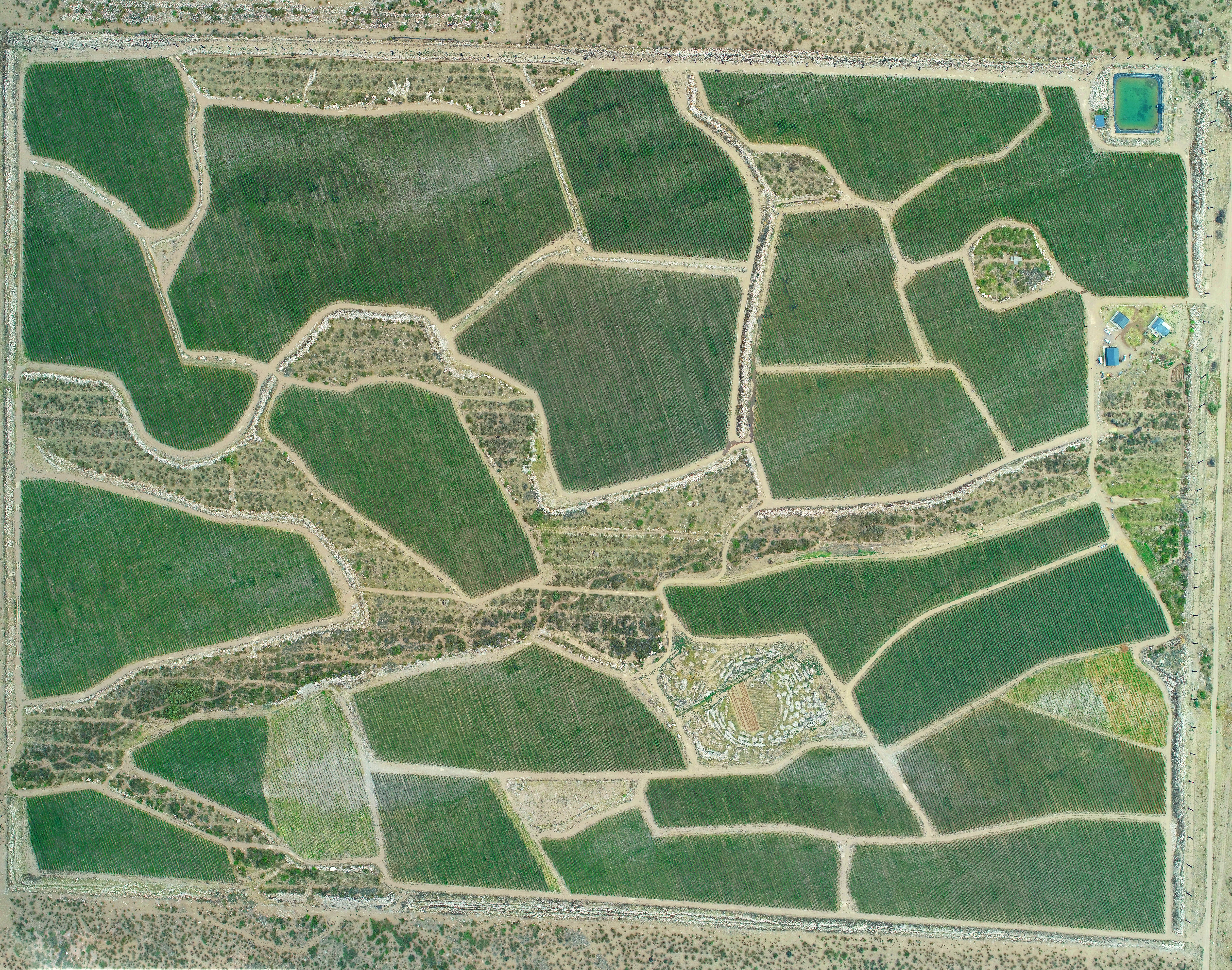
When it comes to biodynamics, is it harder to hit those goals, or does it open some opportunities to do things more creatively?
We are not biodynamic. We are regenerative and organic. Alan York taught us that the first thing to do before all of the biodynamic additions—the horns, the lunar calendar, all that—is to have healthy plants, good people, and a strong system, so we are not biodynamic yet. But even if you are biodynamic or regenerative or organic, the use of water is not a done deal. We are holistic farmers. Holistic farming is the way for me. It’s all about many small details working toward a huge purpose, an elevated purpose. If we say that details matter, then all it takes is one detail to make the difference. Multiply that by 50 or 100, and the difference is huge.
Tell us about the Terroir Series.
These first two, the Terroir wines, are like a big-picture view of the two big areas of Mendoza: Lujan de Cuyo and Valle de Uco.
Lujan de Cuyo – Terroir 2022
Lujan de Cuyo is an expression of the warmer area. We call it “the home of the ants.” 100% Malbec.
When we talk about terroir, it’s not just about the place. Places without people are not places. The interpretation of the places is what we’re focusing on. How do we understand the place? How do we understand the vintage? The vintages are changing. The terroir is dynamic, so we have to be dynamic as well.
This past year was crazy, and it forced us to evolve. My way of thinking, my way of viticulture, the terroir, the Malbec—it all evolved into this “concept wine.”
When you taste the Lujan de Cuyo 2022, you’re not just tasting the 2022 version of the vineyard—you’re tasting the 2022 version of Federico. The Federico that is sitting with you right now is completely different from that guy two years ago. Everything is different. The wine is like a time capsule. The same is true for a painting. I’m not Picasso, but as an example, you can see how he evolved over the 20th century. You can see that young Picasso is not the same person as old Picasso.
Valle de Uco – Terroir 2022
Valle de Uco is the opposite—maybe the compliment—of Lujan de Cuyo. It’s still Malbec, it’s the same vinification, but it comes from the other side of the city. It’s up in the mountains in the Uco Valley from Monasterio, Gualtallary, and Altamira vineyards. To show the difference on the label, we have day and night—the warm and the cold.
The chalky flavor, all the structure, all the complexity. It just comes from the place. That’s something that we’ve wanted to show with Altos since the beginning. The variety is in the back seat, and the terroir is driving the car. We’re not talking about Malbec anymore; we’re talking about places. The way to show places is to not interfere with that flavor. There’s no “winemaker’s signature” to impose. The difference is already there.
What do you think American drinkers misunderstand about Argentine Malbec?
It’s a tough question, because we didn’t really have a big explosion until 2006, more or less, with the popularity of Bordeaux blends and Napa oak, so the Malbec we were making was big bodied, high in alcohol, and very concentrated. In that moment in the 2000s, it’s what the world was expecting. But with time, the new generation’s preference changed, the gastronomy of the world changed, and we changed.
It’s important to go to the market. I’ve made trips to the US in the last three years, and I see that the old concept of Malbec is not working. It’s boring, and people are tired of it. That’s why we’re doing things a different way.
Would you say that the Terroir Series is designed for a new generation of drinkers?
Of course. They are wines that you don’t need to explain. They’re authentic, everyday wines. We always say that we’re in the business of making empty bottles.
Is it easy to drink? That’s the first question. The second is, does it have a good price point? If the price is too high, the drinkability is gone. For us, the Terroir Series is perfect for both.
Meteora 2021
This is when everything changed. When Alberto and Pedro and I do our tastings from the tank every year, we taste blind. When we tasted this one, they said, “This is not a Malbec.” They thought it was something completely different. We didn’t understand it at the time, but now we know we had discovered something new: we were tasting a place. We were tasting an idea. We were tasting the new Malbec of Argentina.
We called it Meteora, because it didn’t taste like anything from this planet, and it came flying, crashing, unexpected into our lives.
That place, Altamira, with holistic farming and a completely different approach to wine, became the new era of Malbec, and I think this is the direction Argentina is moving now. As usual, Altos Las Hormigas is innovating again.
I know that when winemakers usually come to New York, they talk about soil types, data, fermentation processes, temperatures—and all of that is important—but notice how we haven’t talked about any technical things. Too often when we talk about our wines, we forget to talk about enjoying wine, the pleasure of making wine, the pleasure of drinking wine, the pleasure of sharing wine!
I don’t want to worry about trying to understand the wine. I just want to communicate the experience, the concept, the fun and crazy history of making wine. I think it’s more important than the technicisms. The details are easy to find if you want to know, but when I’m here, I want to share the energy that comes from me and all of my team to make this wine.
Los Amantes 2022
In Burgundy, the Premier Cru is not always the same plot, because the Premier Cru is a concept. Meteora is our concept wine. The Grand Cru is always the same block, and that for us is Los Amantes. It’s a single block of Malbec. This is the one that earned 100 points from Tim Atkin and 19 points from Jancis Robinson. We don’t care about the scores. Our purpose is not to get big scores. We believe in something more elevated, and the consequence of that is scores.
This wine has vibrato. You can feel the energy. It changes as it moves across your palate.
For me the difference between elegance and finesse is in the details. Dua Lipa can wear a Prada suit to the Met Gala and it will be elegant, but having it tailor-made gives her finesse. These wines are tailor-made. All of the details—all of the small things—make this wine so that everything is perfect. Of course the wine will be changing through the years, but the texture is perfect. This is my goal with Los Amantes.
What do you see for the next five years and the next fifty years of Mendoza?
Wow. We just opened Pandora’s box. The whites are incredible in their increasing quality, and the Malbec is showing different faces with texture, acidity, aromas. It’s completely different from the past. We’re showing restraint—lower alcohol, less intense acidity—and we’re making better wine.
How do you define the perfect wine?
Is it a wine that makes you feel something? I remember I was in New York last year, and a guy at one of my tastings started crying. I asked him if he was OK, and he said the wine reminded him of his wife. That’s the perfect wine: the one that gives you emotions. Do you know the movie with the mouse that is cooking?
Ratatouille?
Yes, Ratatouille. When he gave the plate to the critic, and he remembered his mother—that’s what the perfect wine can do.
This interview has been edited for length and clarity.
The Wines
Malbec ‘Lujan de Coyo – Terroir‘
- Malbec
- Sourced from two high-density plots, which have a good presence of limestone, and no clay is present
- Hand harvested
- The grapes are transferred by gravity into smaller concrete tanks
- Fermented with indigenous yeasts at 26ºC for 15 days
- Aged for 18 months in concrete pools (75%) and untoasted oak foudres (25%)
- Aged for 6 months in bottle prior to release
DES:92 | JS:91 | V:91
Malbec ‘Valle de Uco – Terroir’
- Malbec
- 100% Uco Valley with high density vineyards located in the sub region of La Consulta as well as two areas in Tupungato
- Gravelly, alluvial soils with abundant stones and limestone presence
- Hand harvested
- Grapes are selected from a double selection table before going into small stainless steel tanks
- Fermentation with indigenous yeasts at 24-26°C for 15 days
- Each tank is tasted two times a day to determine what is needed
- Aged for 18 months in concrete pools (75% of the wine) and untoasted large oak foudres (25% of the wine)
- Aged for 6 months in the bottle
Malbec ‘Meteora’ [Jardin de Hormigas]
- Malbec
- Sourced from plots 7, 9, 11, and 12 of Altos’ Jardín Altamira vineyard, which is located in Paraje Altamira, Uco Valley. The vineyard is located at 1,200 meters above sea level
- The vineyard is certified organic, with sustainable management and a focus on biodiversity, which follows Alan York’s philosophy: grapes are not the product of a plant but of an ecosystem
- Hand harvested
- Fermented with indigenous yeast in epoxy-less concrete tanks, 15% whole cluster, and at 25ºC
- Total maceration for 20 days
- Aged for 12 months in concrete
DES:93 | JS:96 | V:95
Malbec ‘Los Amantes’ [Jardin de Hormigas]
- Malbec
- Sourced from an organic small plot of just over 1HA, in the southern section of the Jardín Altamira vineyard, located in Paraje Altamira (Uco Valley), at 1,200 meters above sea level
- Top soil is comprised of silt with dissolved limestone and large granite rocks with limestone
- Hand harvested
- Fermented with indigenous yeasts for 25 days in concrete vats, with no epoxy and no sulfites, 15% whole cluster and at 26ºC
- Aged in untoasted 3,500L French oak founders for 15 months
- Gently filtered before bottling, and then aged for 12 months in bottle prior to release
JR:19




